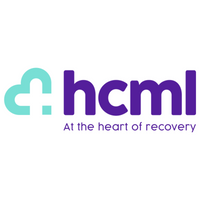How to prevent MSK issues from occurring and how to spot the signs
Musculoskeletal (MSK) disorders across the UK workforce increased last year with statistics showing that this was the likely cause of 10.5% of workplace absences or 22% of long-term absences, according to HCML data.
Data from the NHS England shows that over 20 million people in the UK, a third of the population, have an MSK condition.
This has a huge impact on working people and their employers with reports showing that up to 30 million working days are lost each year due to MSK issues.
Initially deemed as non-life threatening, MSK conditions are now being recognised as life-changing, with many organisations pushing MSK higher on their list of wellbeing priorities.
How to spot the signs
MSK disorders include joint stiffness, muscle tightness, back pain, arm strain, pins and needles and numbness.
They can be caused by jobs that involve heavy physical work, lifting, standing for long shifts of time or sitting down for a prolonged periods.
However lifestyle factors can affect the condition and it’s important to take a holistic view.
When an employee is suffering from MSK pain we look at several factors to help diagnose the issue and determine the best line of treatment. Employees should be aware of any issues they have when moving and doing things that are now more difficult.
These activities may not cause any immediate pain but they may find certain tasks more difficult than they used to.
With a focus on occupational health, if someone is experiencing discomfort, for example lower back pain, knee pain or neck and shoulder stiffness, we need to ask why this is happening.
Are they carrying too much weight, are their activity levels sufficient or are they getting regular good night’s sleep?
All of these could be contributing to the pain and it’s important to address this.
Employee support should be offered which points employees to the support they need.
This could include online triage systems or physiotherapy.
MSK conditions can be caused by repetitive movements, forceful exertions, standing for a long time, sitting awkwardly, working in cold environments and even exposure to vibrations from machinery or tools used.
Exposure to these factors should be managed carefully in a workplace environment, and with the right support there are some very simple ways to prevent MSK issues from occurring:
Keep active
Activity is not always about going to the gym, running or riding a bike, but it is about building movement into everything you do.
If you have employees that are primarily desk based, ensure they have opportunities to get up and move around.
Encourage employees to get out for a walk at lunchtimes or take up other forms of activity such as dancing and cycling.
Being active has benefits for your bones, muscles, tendons and ligaments.
Adding strength and conditioning into workouts, such as squats, lunges and press ups can also increase the strength of the musculoskeletal system.
Flexibility is also key and activities such as yoga and pilates are great for reducing stiffness and tightness while keeping employees active.
Manage your weight
Looking at causation factors, if an employee is carrying excess weight, this increases the load on their musculoskeletal system.
Workplace wellbeing specialists, like HCML, provide confidential assessments with employees to check several areas of their health including nutritional support.
Other useful ideas include standing desks, walking meetings accessible stairwells to encourage use of stairs and subsidised gym memberships.
Nutrition
A poor diet can also increase the risk of MSK conditions.
For example, eating a high carb and sugar diet can cause inflammation that can lead to pain.
Eating plenty of fruit and vegetables, drinking plenty of water and keeping alcohol and sugar to a minimum will all help.
Employers can look to provide nutritional support to help employees eat better and make more informed decisions about their food and drink choices, employers can also ensure healthier foods are available in the workplace.
Ageing well
We often dismiss aches and pain as ageing, yet our lifestyle choices are often what leads to pain. Fuelling our bodies with the right foods and looking after ourselves well will help us age more slowly and suffer fewer musculoskeletal problems.
Practising self-care is important, allowing ourselves to be in the moment and taking time to unwind is important.
Other tips include relaxation, breathing, swimming and massage.
Making sure your employees use their holiday allowance to take time out has exponential benefits, giving them time off to recharge and recalibrate.
Supporting your workforce
Workers that feel good are happier, more productive and provide more value to your organisation.
It’s important to offer a variety of initiatives to appeal to a wide audience when dealing with MSK prevention.
Also bear in mind that if support is difficult to access, it will not be utilised making it expensive and ineffective.
Behavioural changes around lifestyle choices such as activity levels and nutrition don’t happen overnight and it takes time for the benefits of wellbeing initiatives to take effect.
There are several ways that employers can support their workforce that are hugely effective providing them with the tools to improve their health in a very easy to consume manner.
Engaging with a workplace wellbeing provider can help organisations ascertain the best and most effective way to support the workforce.
Supplied by REBA Associate Member, HCML
HCML is a health and wellbeing provider, offering integrated and personalised healthcare solutions.








